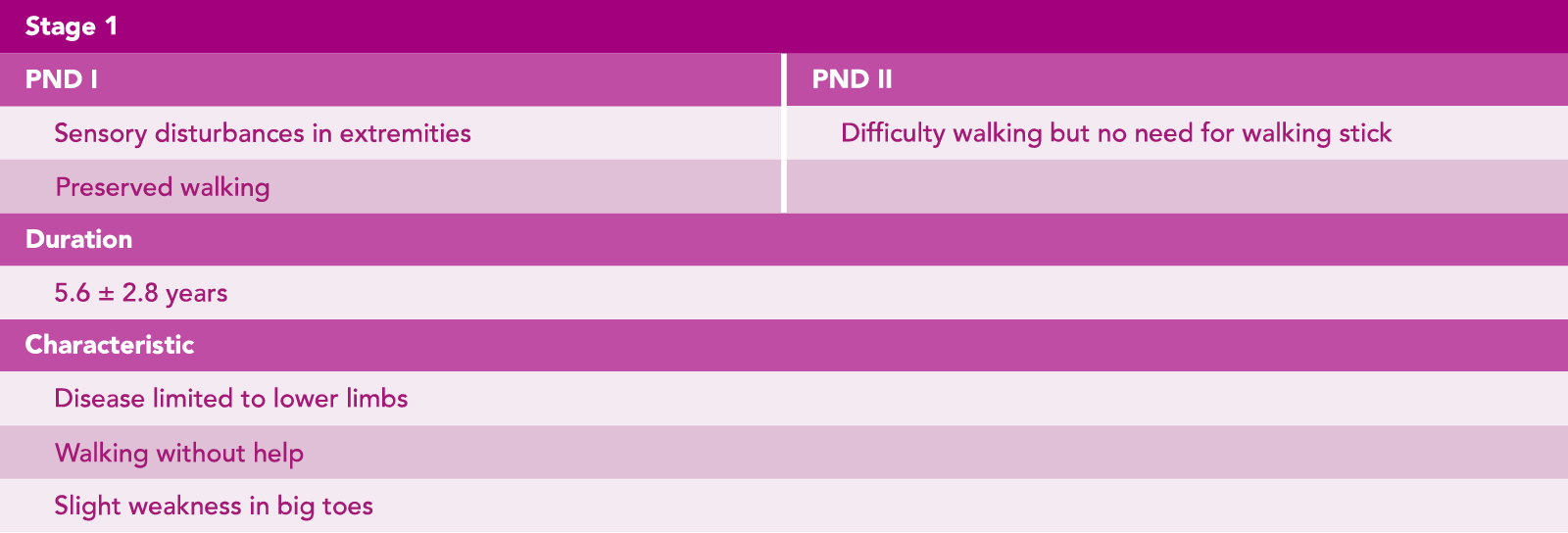This information is for healthcare professionals based in EU countries only.
Are you a healthcare professional?

PND Polyneuropathy disability. PND staging describes disease progression based on ambulatory status

PND Polyneuropathy disability. PND staging describes disease progression based on ambulatory status

PND Polyneuropathy disability. PND staging describes disease progression based on ambulatory status
This information is for healthcare professionals based in EU countries only.
Are you a healthcare professional?